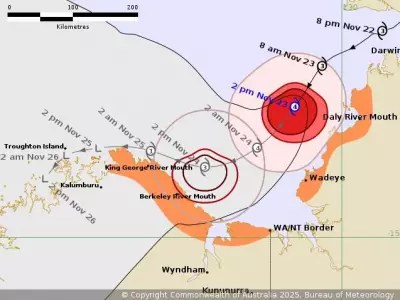
The vibrant carpets of red, yellow, and orange flowers greeting visitors to Jindabyne might look like intentional landscaping, but this colourful display is actually an environmental crisis in disguise. These eye-catching blooms belong to gazanias, an invasive weed from South Africa that's rapidly spreading through Australia's high country.
Beauty Versus Biodiversity
Recent weeks have seen tourists flocking to photograph the spectacular gazania displays at Jindabyne's entrance, with multiple vehicles pulled over to admire the false beauty. When approached about the flowers' invasive nature, visitors showed more interest in capturing perfect selfies than understanding the ecological damage.
Local authorities appear equally unconcerned. A Snowy Monaro Regional Council spokesperson confirmed that while gazanias are classified as a priority weed, "there are other greater biosecurity priorities". The council even receives requests from community members to preserve the colourful displays by avoiding mowing - a practice that ironically helps prevent further seed dispersal.
Environmental Cancer Spreading
Experts are sounding alarm bells about gazania's destructive potential. Dr Ali Bajwa, senior lecturer in weed science at La Trobe University, explains that changing climatic conditions are accelerating the weed's spread beyond roadsides into native grasslands, coastlines, and cropping areas.
"Gazanias are highly invasive and due to changing climatic conditions are now spreading rapidly, not only overrunning roadsides such as those in Jindabyne, many native grasslands, and coastlines but they are moving into grain production areas, choking out crops and costing farmers," Dr Bajwa warns.
The Invasive Species Council compares gazania's environmental impact to notorious pests like carp, cane toads, and rabbits. New research reveals the plant's seeds can thrive in almost any Australian environment, from coastal dunes to agricultural paddocks.
The Uphill Battle for Control
Controlling gazanias presents significant challenges. Dr Bajwa confirms there are currently no effective herbicides, making manual removal the most viable option. However, this requires careful execution as disturbing flowering plants can spread lightweight seeds kilometres away.
"You need to be careful because they are perennial species and have secondary root structures... once you've removed the whole plant, you need to bury them or burn them," Dr Bajwa advises.
The core of the problem remains their continued availability in nurseries. Despite being banned in South Australia, gazanias are readily sold in Canberra region garden centres. Both Dr Bajwa and Imogen Ebsworth of the Invasive Species Council are calling for a national ban on sales.
"The massive negative impact they are having on our environment far outweighs any value of enjoyment from their 'prettiness'," asserts Dr Bajwa.
Meanwhile, the colourful invasion continues to spread, with similar gazania outbreaks reported along the Kings Highway near Queanbeyan. As tourists continue to flock to Jindabyne's vibrant displays, the disconnect between aesthetic appeal and environmental responsibility grows ever wider.





